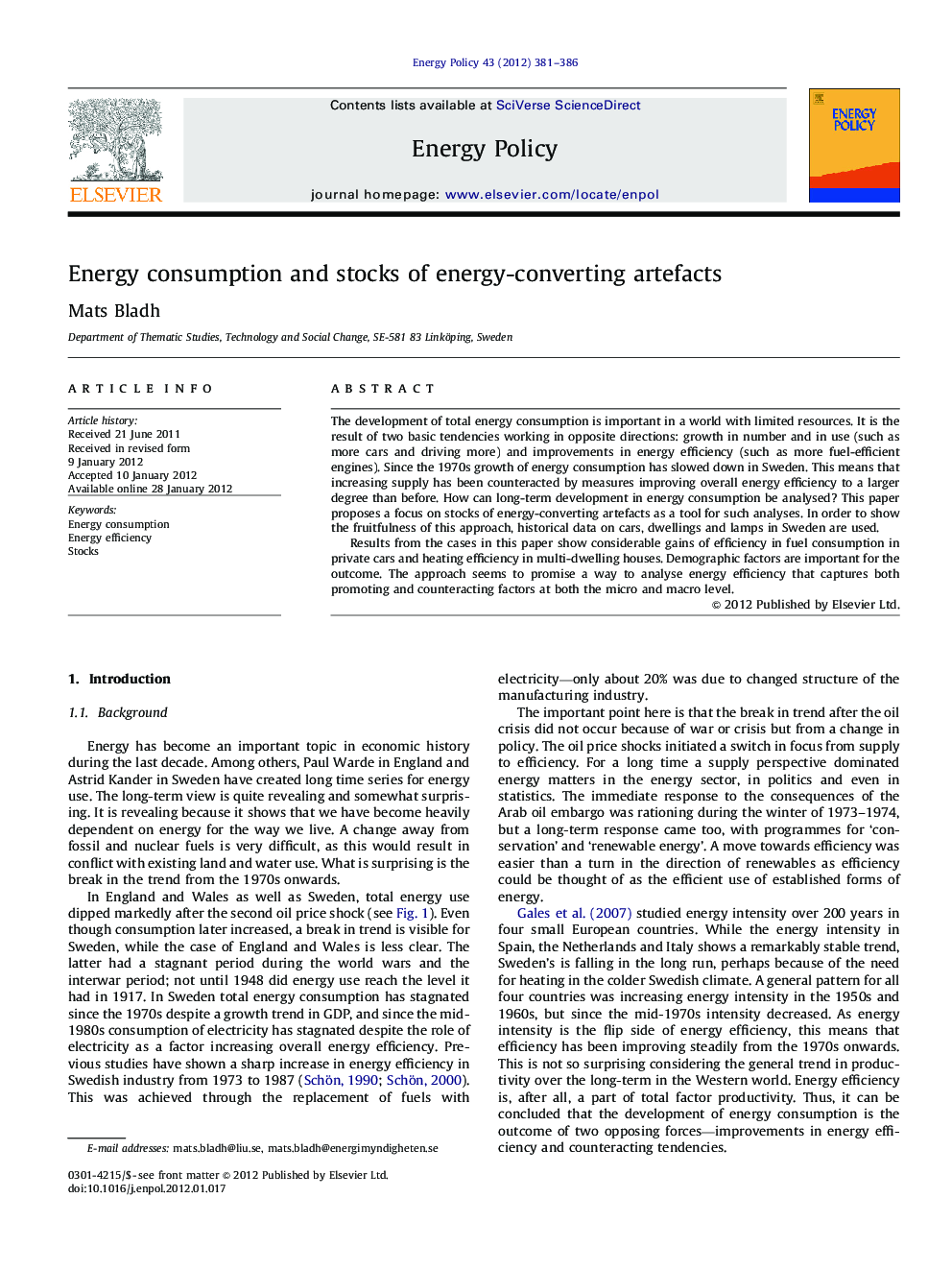| Article ID | Journal | Published Year | Pages | File Type |
|---|---|---|---|---|
| 994869 | Energy Policy | 2012 | 6 Pages |
The development of total energy consumption is important in a world with limited resources. It is the result of two basic tendencies working in opposite directions: growth in number and in use (such as more cars and driving more) and improvements in energy efficiency (such as more fuel-efficient engines). Since the 1970s growth of energy consumption has slowed down in Sweden. This means that increasing supply has been counteracted by measures improving overall energy efficiency to a larger degree than before. How can long-term development in energy consumption be analysed? This paper proposes a focus on stocks of energy-converting artefacts as a tool for such analyses. In order to show the fruitfulness of this approach, historical data on cars, dwellings and lamps in Sweden are used.Results from the cases in this paper show considerable gains of efficiency in fuel consumption in private cars and heating efficiency in multi-dwelling houses. Demographic factors are important for the outcome. The approach seems to promise a way to analyse energy efficiency that captures both promoting and counteracting factors at both the micro and macro level.
► Growth of energy consumption slowed down in the 1970s, a break in the long-run trend. ► Balance between growth and efficiency factors changes over time and areas of use. ► Savings in heating were not taken back, while those for cars were. ► Focus on stocks of artefacts is a promising tool for analyses. ► Incremental changes within existing stocks can be as big as radical changes.
